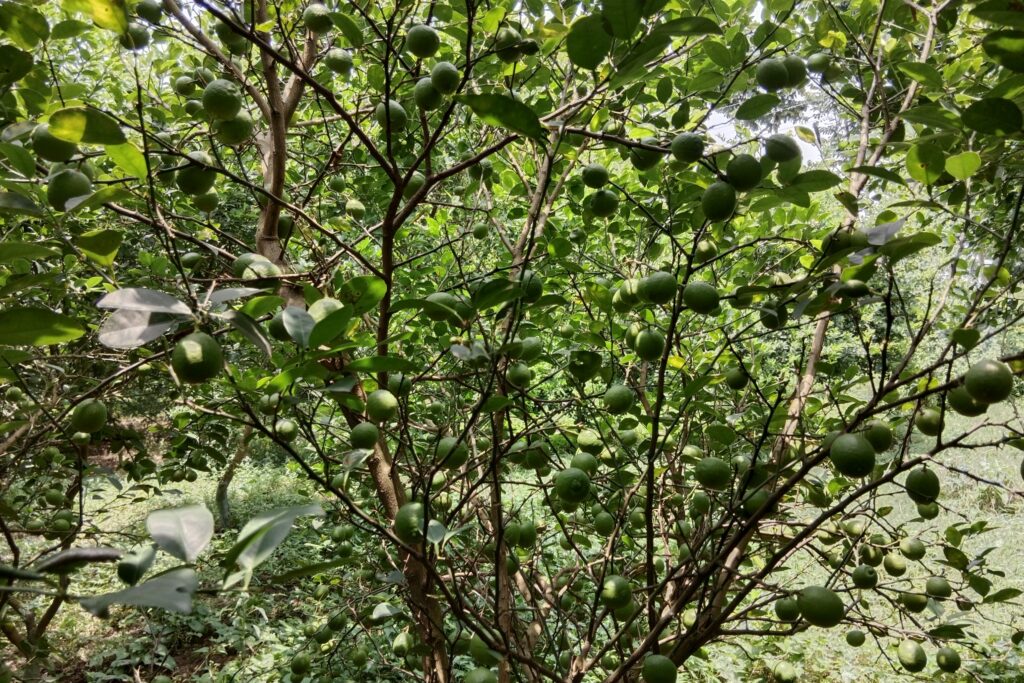Introduction
The vibrant green leaves and delightful fruits of banana trees have the potential to turn any garden into a tropical oasis. However, ensuring their strong growth and bountiful harvest relies significantly on carefully choosing the appropriate banana fertilizer. This article aims to underscore key factors in the selection of the ideal fertilizer for big banana bunches, equipping you with the knowledge to make well-informed decisions.

Bananas are categorized as high-demand plants, needing substantial quantities of potassium and nitrogen. While magnesium (Mg), calcium (Ca), and phosphorus (P) are vital elements, they are required in smaller amounts. Boron plays a crucial role in advancing fruit and seed development, prolonging the life of pollen tubes, enhancing germination, and optimizing the production and maintenance of blossoms. Studies show that a 20 kg cluster of bananas depletes 44 g of nitrogen (N), 5 g of phosphorus (P), and 143.47 g of potassium (K).
What are the best fertilizers for a big banana bunch?
Banana trees need to maintain a balanced combination of macro and micronutrients in order to support strong leaf and stem development, big banana bunchs, fruit production, and good blooming. In banana farming, fertilizer application is essential to ensure strong growth, high yields, and excellent quality of the big banana bunch. Due to their high nutritional needs, these plants require a regular supply of vital nutrients during all stages of growth. Major fertilizers used in banana farming include:
Nitrogen Fertilizer
Nitrogen is essential for plant growth and vitality, particularly in big banana bunch production. It is necessary for leaf formation, strong vegetative growth, and general plant vitality. In the production of big bananas bunch, nitrogen sources like urea, ammonium sulfate, and calcium nitrate are frequently used as fertilizers.
Nitrogen is very helpful to banana trees since it promotes the growth of their pseudostems and leaves. It ensures that banana leaves are healthy and gives the firm growth of the stems of the banana plant the necessary support by promoting a brilliant green color in the leaves. Consequently, the plant’s capacity to regularly generate an abundance of products throughout the seasons is greatly enhanced by this nitrogen support.
Phosphorus Fertilizer
Phosphorus is pivotal for banana growth, essential in root development, flowering onset, and early fruit formation. It aids in energy transfer and root establishment, commonly found in fertilizers like superphosphate and triple superphosphate for banana cultivation. Ensuring phosphorus presence is crucial for firm, healthy rhizomes and robust root strength. Apply phosphorus during crop cycles three to nine months post-planting to bolster growth. During flowering and fruiting stages, supplementing with phosphorus replenishes lost nutrients and prevents stunted growth and root malformation.
Phosphorus significantly fortifies banana roots, enabling better water and nutrient absorption. Its timely application fosters sturdy roots and a resilient rhizome, vital for a big banana bunch and high productivity.
Potassium Fertilizer
Potassium is pivotal in banana farming, fostering fruit development, improving quality, and bolstering plant resilience against stress and diseases. Its role in regulating plant water and extending banana shelf life is crucial. Commonly used potassium fertilizers, such as potassium sulfate and muriate of potash, are integral in cultivation.
This nutrient significantly stimulates young banana shoot growth and expedites fruit ripening, elevating overall plant quality. A critical impact occurs in the bunch, emphasizing potassium’s necessity for superior fruit quality and yield. Inadequate potassium slashes dry matter by 50%, reduces bunch yield by 80%, and detrimentally affects root health.
Potassium’s function in nutrient and water movement from roots to leaves and bunches is vital for big banana bunch nourishment and growth.
Calcium Fertilizer
In bananas, calcium is essential for preserving the strength and structural integrity of the cell walls. This helps to avoid problems like internal fruit breakdown and tip burn, which results in better-quality fruit. In order to overcome these issues, calcium nitrate and calcium chloride are two popular calcium sources utilized in banana farming for big banana bunches.
Magnesium Fertilizer
Magnesium serves as a fundamental element in chlorophyll, vital for the process of photosynthesis and the holistic growth of plants. To supplement magnesium in banana plants, Epsom salts, containing magnesium sulfate, are frequently utilized. This nutrient plays a key role in enabling leaves to effectively utilize captured sunlight for the production of food.
Borax
Boron plays a critical role in regulating plant hormone levels, ensuring their healthy growth. It boosts flower production and preservation, elongates pollen tubes, aids in their germination, and fosters the growth of seeds and fruits. Application recommendation: Use 25g of Borax salt per plant to support these essential functions.
Organic manures
Manure is a natural fertilizer choice for big banana bunches, containing nitrogen, potassium, and phosphorus vital for their growth. Composted manure provides these essential nutrients.
Organic options like compost, manure, and banana peels offer sustainable, soil-enriching solutions, supplying diverse nutrients for long-term tree health.
Using organic banana fertilizers supports sustainable growth, delivering crucial nutrients, enriching the soil, and fostering robust plant development. Varieties like compost, vermicompost, green manure, cover crops, seaweed fertilizers, pruned leaves, stems, and fish emulsions help grow big banana bunches in plants.
Fertilizers can be applied through various methods to get a big banana bunch
Soil application
Fertilizers are spread around the base of the banana plants or along the rows. They can be broadcast or placed in bands, depending on the specific fertilizer and soil conditions.
Foliar application
Some fertilizers can be dissolved in water and sprayed directly onto the leaves. This method provides a quick nutrient boost, especially during periods of high growth or stress.
Fertigation
Fertilizers are dissolved in irrigation water and applied directly to the root zone through a drip irrigation system. This method ensures precise application and efficient nutrient uptake by the plants.
How often do banana trees need fertilizer?
It’s essential to apply fertilizers based on soil nutrient analysis, considering the specific requirements of the banana variety, stage of growth, climate conditions, and local soil characteristics. Over-fertilization can lead to environmental pollution and imbalanced plant growth, while under-fertilization can result in poor yields and nutrient deficiencies. Therefore, a balanced and judicious application of fertilizers is crucial for successful banana production. Regular monitoring and adjustment of fertilizer application based on plant response and soil tests are recommended for optimal growth and yield. These are the perfect stages for bananas to apply fertilizers.
Young Banana Trees (First 4-6 Months)
Young or recently planted banana trees do well when fertilizer is applied consistently and gently. Fertilizer should be applied about every 4 to 6 weeks during the first few months to promote establishment and early development. Apply a well-balanced fertilizer to provide the nutrients required for strong and healthy growth.
Established Banana Trees (6 Months to Fruit Development)

Once the banana trees have become established, typically after the initial 4-6 months, reduce the frequency of fertilizer application to about every 2 to 3 months. During this stage, the trees focus on developing their structural strength and increasing leaf mass. Apply a balanced fertilizer, emphasizing potassium (K) to encourage healthy root and shoot growth.
Fruiting Banana Trees
Different nutritional concentrations are needed to support fruit development on banana plants once they start bearing fruit. For optimal fruit quality and output during this stage, give potassium-rich fertilizers priority. The trees should receive a steady supply of nutrients every two to three months from fertilizer to produce a healthy crop.
Big banana bunches are supported by an adequate supply of potassium, which is especially important throughout the flowering and fruiting periods.
Post-Harvest Period
The trees will go through a regeneration stage once big banana bunches are harvested. It’s critical to keep giving nutrients during this period to promote the development of new shoots and preserve the plant’s health. Fertilizer should be applied every two to three months to help the tree recover and be ready for the next fruiting cycle.
Application Tips
Timing
Fertilize banana trees during the growing season, typically from spring to early fall, to support active growth and fruit production.
Quantity
To prevent overfertilization, which can be harmful to the tree, adhere to the manufacturer’s recommendations about the application rate.
Application Method
Spread the fertilizer evenly around the tree’s drip line and water thoroughly afterward to help nutrients penetrate the soil.
Fertilizer Application Tips for Big Banana Bunches.
Mulching
To control soil temperature and conserve moisture, mulch the area surrounding the tree’s base.
Regular Watering
As banana trees need a lot of moisture to flourish to their full potential, make sure you water them regularly and enough.
Pruning
Remove dead or diseased leaves to promote airflow and prevent pest infestations.
Conclusion
Selecting the best fertilizer for big banana bunch trees involves understanding their nutrient requirements and choosing a product that meets those needs. Whether opting for balanced synthetic fertilizers or embracing organic alternatives, the key is to provide essential nutrients for robust growth and abundant fruit production.
Remember, proper application and complementary care practices like mulching, watering, and pruning play a pivotal role in nurturing healthy and flourishing banana trees. By following these guidelines, you’ll be well on your way to cultivating thriving banana trees in your garden.



Pingback: The Ultimate Guide to Banana Farming. -
Pingback: Banana Fertilizer Schedule: A Step-by-Step Guide